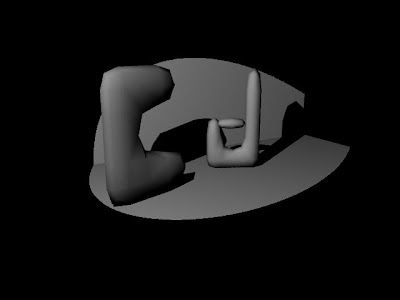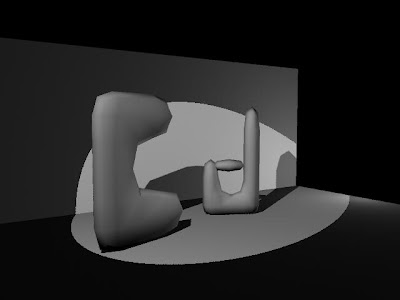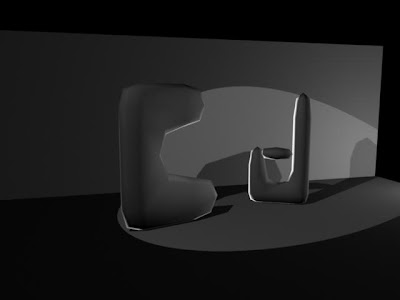Below is an sample for the first term paper assignment; the paper was written by Corey Tom, with a few editorial changes by myself. Note that the paper does not exactly follow the outline (see previous post) but is mostly faithful to it. If you decide to deviate significantly from your outline, that's OK but write me a short note at the end of your term paper describing the differences.
http://en.wikipedia.org/wiki/File:Tiposter.jpg
IncrediPhysics – Physics in The Incredibles movie
Pixar’s animated feature film The Incredibles shows us a world very much like our own, but with one main difference: the existence of superheroes (and super villains). This world, for the most part, operates by the same laws of physics as our own. There are but a few exceptions where these rules are bent or broken for the sake of the world of these super humans. These include the heroes’ abilities and even their clothes.
This paper discusses how the world in The Incredibles works, focusing specifically on the physics of that animated world. The laws of gravity in the movie are still very much like our own. The first example is at the beginning of the movie, when Mr. Incredible thwarts a suicide jumper’s attempt to kill himself by jumping off a tall building. As an estimate, the stories on the building look to be at least 30 feet tall. Mr. Sansweet, the jumper, falls about 15 stories or more in a time of about 6 seconds before he’s intercepted by Mr. Incredible. That means in 6 seconds he fell about 450 feet. According to the equation (Distance in inches) = (1/3 inch) x (Number of Frames) x (Number of Frames) , we get (1/3in.) x (24 x 6) * x (24 x 6) = 6912 inches which means he should fall 576 feet in that time. Given that he may have jumped upward off of the ledge instead of dropping straight off, and some drag created by his clothing and by falling in a horizontal pose instead of in a nosedive, a lesser distance of 450 feet is reasonable.
There are plenty of other examples of objects falling over a smaller distance in a believable manner according to the usual laws of gravity, such as the cup of pencils on Bob’s desk after being berated by his boss, Mr. Huph, which falls comparably to a brick drop animation pencil test. There’s also the scene where Mr. Incredible realizes he has Syndrome’s remote and subsequently gets smashed by the robot. The remote gets thrown in the air, then it drops and bounces very similar to the timing in a ball drop. These examples and countless others within the film help create a consistent and believable world with gravitational forces very similar to our own.
Another example of falling occurs during the big finale when Syndrome’s plane explodes and falls to the ground with perfect dramatic timing, hitting the ground immediately after Elastigirl lands with Jack Jack. This example could be compared to a similar occurrence earlier in the movie, when Elastigirl’s plane gets destroyed by missiles. This is one of the few times where the law of gravity or the properties of air resistance seem to have been warped in this movie. The plane explodes, sending debris and our three heroes plummeting toward the ocean. However, it should be noted that the three of them seem to fall faster than the debris. This is reasonable at the beginning of the scene as Elastigirl is still in a ball, providing the least air resistance, and much of the debris is more flat, providing much more surface area for drag. However, as soon as she unravels and they continue falling, the three characters still fall faster than the debris. In addition, when Elastigirl grabs them out of the air and unfurls herself into a parachute, we are looking up at them and yet we don’t see any sign of debris or the explosion behind them (which was most likely an art decision so that the scene wasn’t too cluttered). We don’t see any falling debris until they are just landing in the water, the debris falling far away in the background. Again, the debris is falling slower than them, even with Elastigirl as a parachute.
The characters begin talking and a couple of seconds later what appears to be the nose of the plane finally plummets (nose first) into the ocean right where they were. Given that Elastigirl severely slowed their descent as a parachute and the nose of the plane is a very aerodynamic piece, one would expect the plane’s nose to have hit the water much sooner, if not before, the characters landed in the ocean. The reason for this discrepancy with the standard laws of physics is to achieve dramatic effect. The movie’s heroes have just survived a mid-air explosion and the nose nearly crushing them after they’ve safely landed in the water is the button to the sequence.
Another notable difference between the world of The Incredibles and our own is the super suit. Designed by Edna Mode, these thin fabric suits are made to protect the superhero from anything a villain might throw at them, from bullets to a raging inferno to powerful explosions. This is beyond any cloth that exists in our world, the only possible equivalent materials at our disposal would be dense body armor (which would only protect against the bullets) or a reinforced bunker (which could still be destroyed by bombs/missiles). But even Mr. Incredible’s old super suit gets torn by an initial attack by the Omnidroid, which seems to say that the technology behind these super suits gets outdated by newer weapons. Therefore, Mode designs a new suit for Mr. Incredible and his family (despite Incredible’s request for a simple patch up), which, as she shows to Elastigirl, is completely bulletproof, nearly indestructible (as it gets hit with two missiles), and able to withstand temperatures of over one-thousand degrees among other features (such as, comically, being machine-washable). Again, the technology behind these suits is beyond what we have, but we accept it because a super hero needs a suit that can withstand the trials of their battles.
This could even be compared to other superhero movies, cartoons, or comics. Two well-known heroes, Batman and Superman, receive damage to their suits all the time. A good indicator of how much they’re actually getting beat up seems to be how torn up their suit is as well, otherwise we would only see a beat up face (or in Batman’s case, a mouth). Referring back to the Incredibles, even if this cloth is super strong and nearly impervious, there’s still the human factor. Even though these people are super humans, they’re still not invincible. Mr. Incredible gets cut by the Omnidroid, Violet gets knocked out by the later version of the robot, and Elastigirl gets temporarily knocked unconscious by the missile explosion.
They can still get injured just as we can still be injured by a bullet even if wearing a bulletproof vest. The vest does well to prevent any kind of fatal injury by preventing the bullet from penetrating the body. Nevertheless, the bullet’s momentum has to be stopped by the suit and the shorter the distance in which the bullet is stopped, the greater the force. This is the same principle that tells us that when an object hits the ground a slow squash on impact exerts a smaller force than a sudden, quick halt. So even if the clothing is impenetrable, a deadly projectile stopped in a short distance exerts a large force on the character, leading to bruising, broken ribs, or even greater internal bodily damage. A “superhero” may be able to take a bigger beating than your average human (otherwise they wouldn’t be super!) and therefore more resistant to damage to their person. Despite this gap between our world and theirs, we accept that these suits can provide the protection they do because it’s a movie and it’s about superheroes.
The final point to discuss is the various superheroes’ special powers. They range from being able to bend the laws of physics to actually defying them. One of the most obvious is the ability to fly. None of the main super heroes in the movie can fly (though baby Jack Jack levitates), but in brief flashbacks several minor characters were shown to be able to fly, much like the familiar Superman. The characters have no propulsion except for the initial push off from the ground. Given the large amount of energy required to lift a person’s weight to a great height, using only the push off the ground requires that force to be extremely large, resulting in a violent acceleration when taking off.
Once in the air these flying superheros seem to control speed by giving a little more intense look or thrusting their arms forward, and they can control direction and altitude by just thinking or actually tilting themselves to where they want to go. The fact is, though, that they purely defy gravity, and it’s mostly due to the eternal human desire to be able to fly like a bird. The closest we can come to this in the real world is wearing a special jump suit, called a wingsuit, which basically turns the wearer into a flying squirrel (
http://www.youtube.com/watch?v=JHlOvhlKPvs) or strapping small jets to our body for propulsion (
http://www.youtube.com/watch?v=EP3JIrJMrrY).
Other superhero powers are more grounded in reality, but then pushed beyond human limitation. Super strength, speed, and stretchiness, for example: humans have a very limited ability for each of these (stretchiness would be more like an extension of flexibility), some are able to push themselves farther than other people such as bodybuilders for strength, track sprinters for speed, and gymnastics or practitioners of yoga for flexibility. Many other superhero powers are grounded in reality, whether pulling from science or nature. Violet’s invisibility power, for example, can be compared to animal’s camouflage in nature. There are octopi, cuttlefish, chameleons, and many other species of animals that can actually change pigments in their skin to blend in flawlessly with their surroundings. There has also been recent developments at UC Berkeley in making “a metamaterial which has a negative refraction index….it bends light around the object. It currently works only on microwave frequencies but is expected to work on the visible spectrum as the materials are made smaller.”
Violet’s other power is to create a force field, something scientists are working with to protect space travelers and satellites. This generally involves the use of plasma rather than generating some kind of energy field out of thin air as is the case in most fiction. In “The Incredibles”, with the exception of flight without propulsion, superhero abilities are founded in a human ability that is pushed way beyond its current limits.
Pixar created a world similar to our own in “The Incredibles”, with the slight difference of superheroes and villains. They stayed true to their world in a consistent portrayal of the laws of physics in their world with some exceptions where the rules were broken to give better effect to the scene. The animators gave us a believable universe where most ideas are grounded in our reality and the rest pulled from what we’re used to in superhero stories. In the end, we are left satisfied with having watched an Incredible movie.



